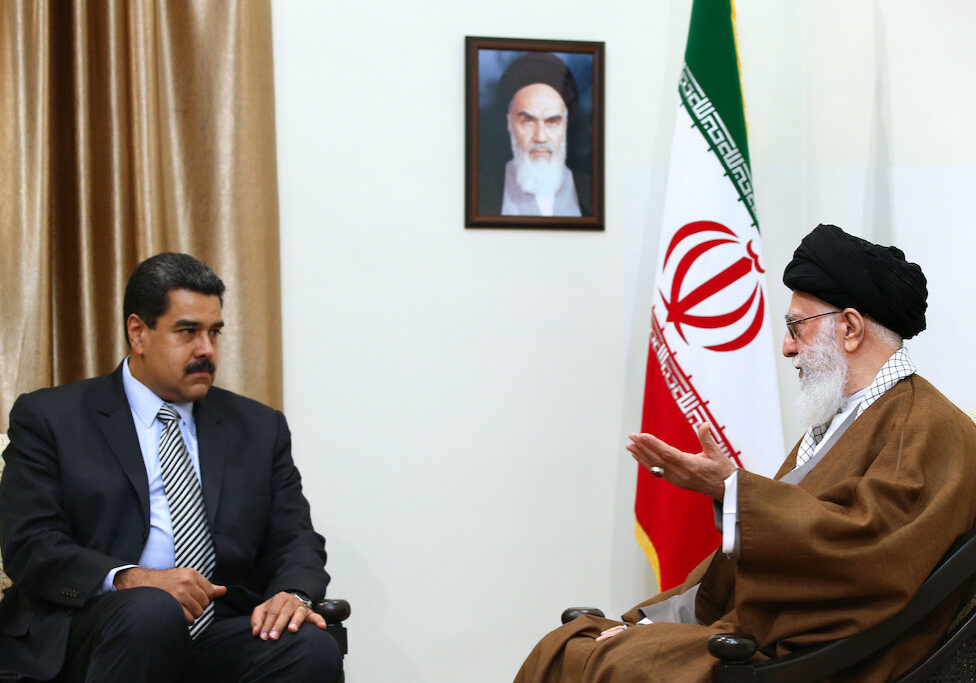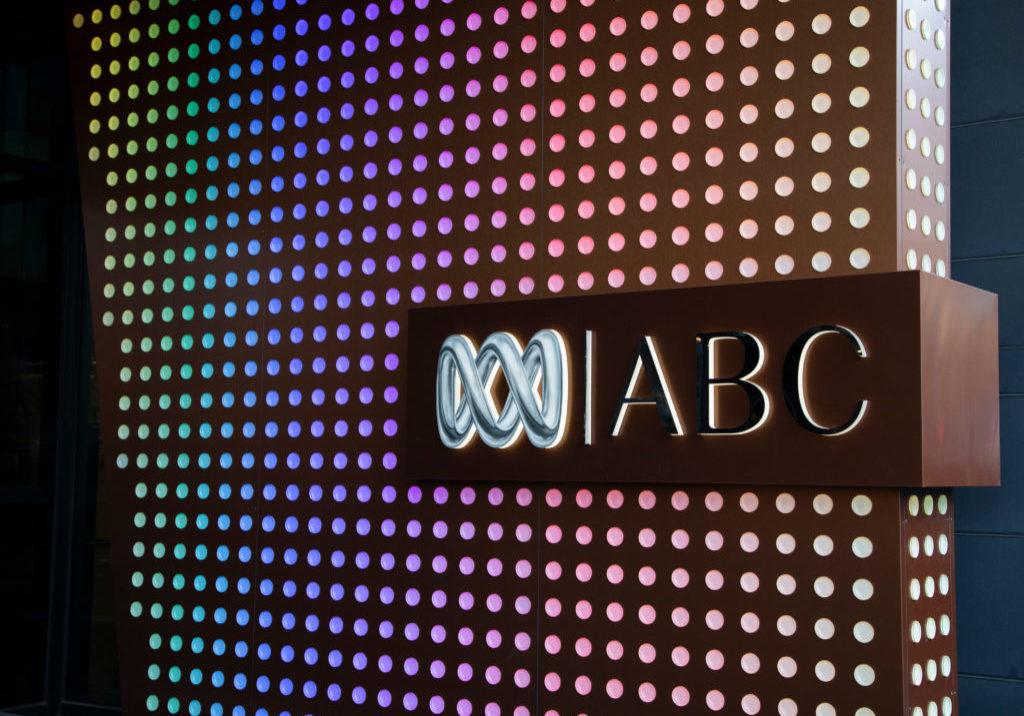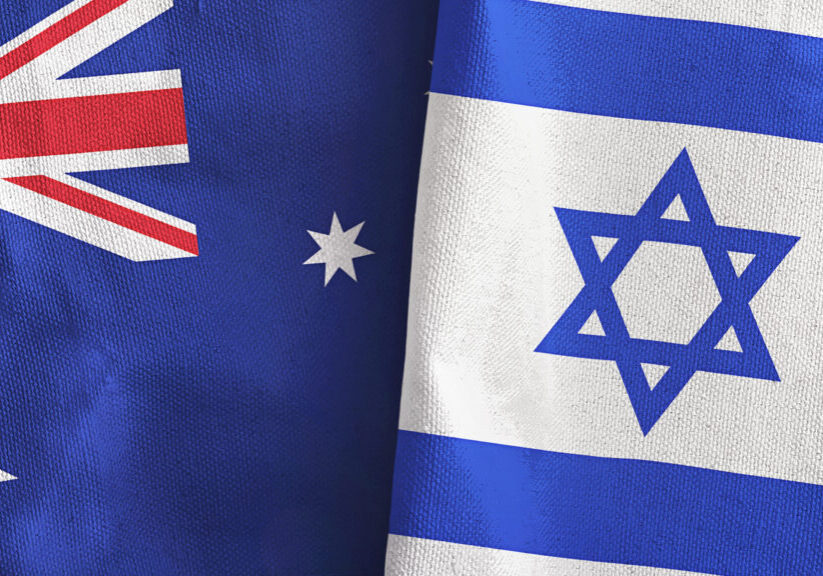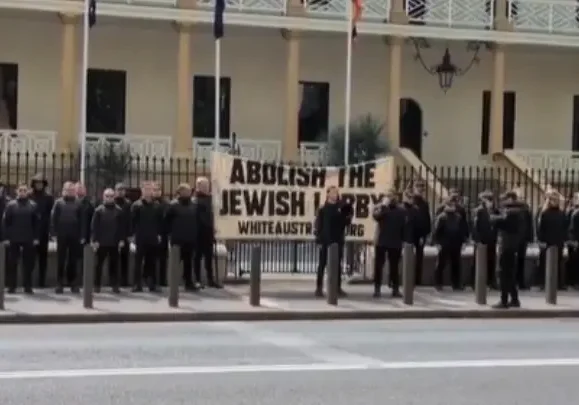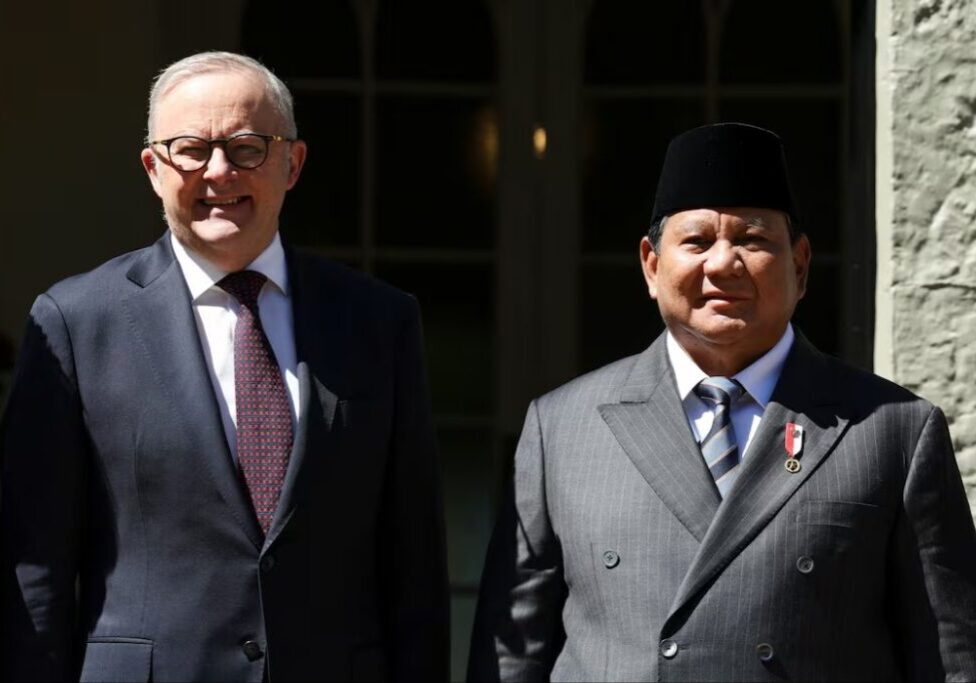Australia/Israel Review
Essay: The Politics of Hatred
Apr 1, 2025 | Henry Ergas
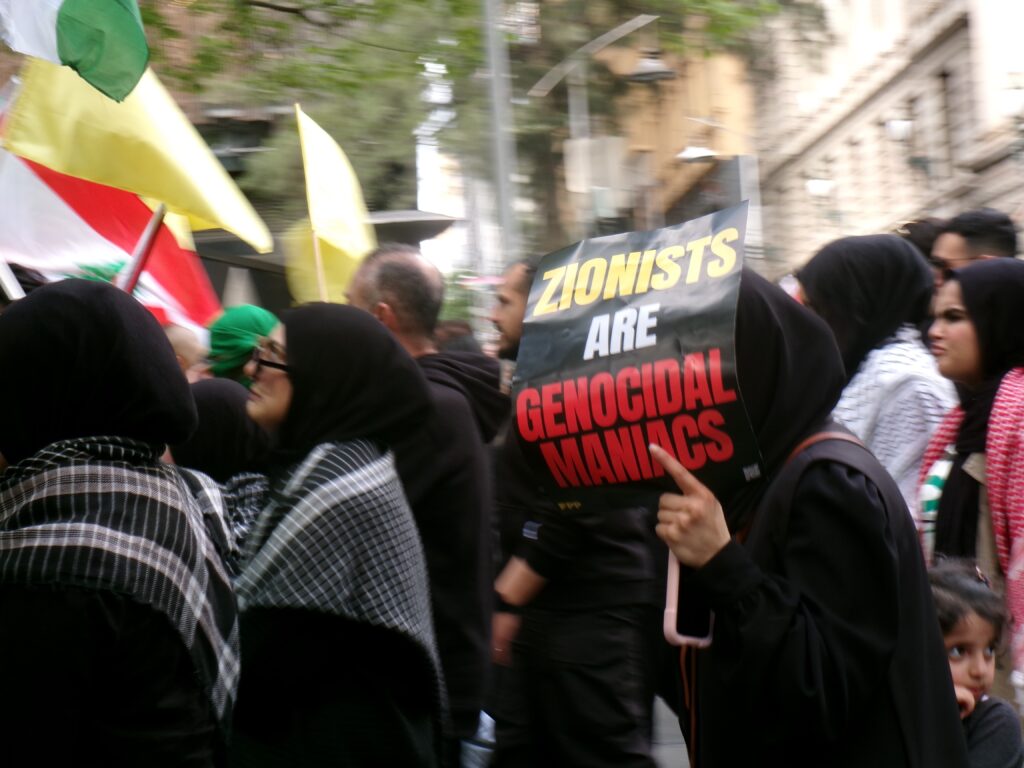
Explaining Australian antisemitism since October 7
Years ago, Saul Bellow published a book of essays called There Is Simply Too Much to Think About. Who among us has not felt, in the 17 months since October 7, overwhelmed by events that, until then, we would scarcely have credited, much less predicted? There is, indeed, simply too much to think about – but think about it we must, not merely so as to understand but so as to respond. I will therefore sketch, by way of introduction to a proper assessment, some preliminary elements – and they are no more than that – of an analysis.
It is useful to start from the obvious. And few things are more obvious than the role that significant elements in the Muslim community have played in the current wave of antisemitism. That Muslims in Australia are fully entitled to hold and express strong views about the Middle East scarcely needs to be said; but it is one thing to hold strong views and quite another to insult, intimidate and injure others – much less to call Jews, including Jewish Australians, vermin that deserve to be exterminated.
It is hard, if not impossible, to find any precedent in this country’s history for that kind of behaviour, at least on the current scale. A question therefore naturally arises: why are we now observing phenomena that were previously marginal, if not largely unknown?
To ask that question is not to deny that Australia has experienced periods scarred by intense ethnic and religious antagonisms: the tensions between the Irish and the English in the decades leading up to and immediately following the Irish Civil War are a striking case in point.
That those tensions were acute is well-documented; so too is the durable harm they caused. They reflected the resentments Irish Catholics had developed over more than a century, resentments that exploded in periodic rebellions and that were heightened by the starvation, disease and mass immigration caused by the famine that devastated Ireland from 1845 to 1852. But while those tensions and resentments imposed real costs on the Australian polity, they were reasonably well contained and only infrequently boiled over into outright clashes.
Thus, in her historical survey of religious conflict in the countries of British settlement, Hilary Carey concludes that 19th-century Australians “lived in a sectarian environment; however, the sectarian tensions remained a pale imitation of rival tensions in northern England, Ireland and Scotland or in other settler societies.”
That favourable assessment scarcely remains true today. The reason for the difference between then and now is, I believe, simple: the pressures that made for integration and toleration were far stronger in the past while those that made for separation and intolerance were far weaker.
Sheer distance was an especially potent source of pressure to integrate. To come to Australia was to leave one’s home country – and even one’s home culture – behind, usually forever. The past was literally another country.
Moreover, in Australia, there was no choice but to mix with people who were radically different. What most shocked many English settlers, the historian John Hirst noted, was not the climate, the natural environment or even the presence of Indigenous Australians – it was the fact of having to live and work alongside Irishmen, Welshmen and the Scots. Adjusting to that fact imposed a profound change in lifestyle and attitudes: even the most devout Irish Catholics soon discovered that one could not live in Melbourne as if one were still in County Cork.
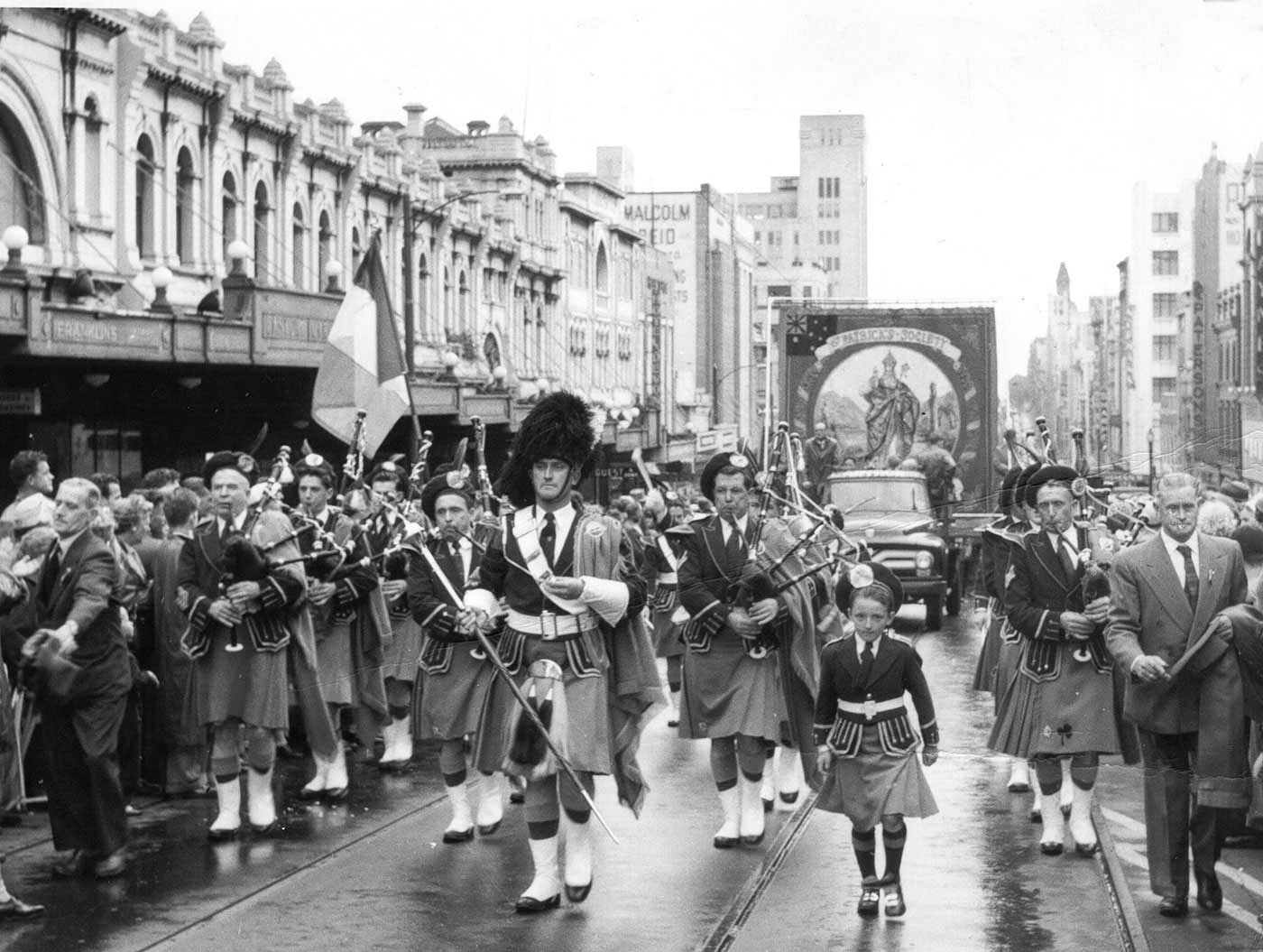
Irish pride: St Patrick’s Day parade in 1950s Melbourne (Image: National Museum of Australia)
There were, at the same time, strong and effective integrative institutions. No one has placed greater emphasis on the role of these institutions, and notably of the labour movement, than Patrick O’Farrell, the preeminent historian of Irish Catholicism in Australia. The ALP and the unions, he writes, were “the most powerful of anti-Irish solvents;” they “joined persons of all religions or none in common cause,” with their mass membership broadening “Irish Catholic acquaintance and friendship outside their religion.” On top of that, while “the movement had factions and conflicting tendencies, it would not entertain sectarianism.” Reinforcing the integrative effect of those movements was a dense mesh of community organisations such as sporting clubs, which, John Hirst has shown, made it a rule to ensure their leadership spanned – and hence brought together – different religious and ethnic communities.
But if those integrative mechanisms worked, it was also because the antagonisms were less virulent and less deeply entrenched. Not even Archbishop Mannix, taken in his most extreme moments, ever suggested that non-Catholics were vermin; one simply cannot imagine him entertaining the thought that Protestants should be exterminated. Rather, the dominant attitude among Irish Catholics in this country – an attitude reinforced by pride in what they and Australia had achieved – was a genuine sense of common Australianness. “We shall champion the claims of Irish-Australians to perfect essential equality with their fellow citizens,” the Irish-Australian newspaper boldly declared in its first editorial in 1894; “but we shall advocate it on generous lines, offering a hearty welcome to all who would become Australian.”
And those sentiments of shared “Australianness” were repeated time and again both by Catholic prelates and by prominent politicians, such as Jim Scullin, who were intimately associated with Irish Catholicism in the public mind.
To say Australians naturally warmed to others would be a gross exaggeration; but there was, at least for those classed as “whites”, an acceptance that – despite being grudging and often superficial – was nonetheless real. Accompanying it was the expectation – superbly documented by Peter Medding’s early 1960s study of Jews in Melbourne – that recent arrivals would play by the rules, including the rule of not being too assertively different. In the end, says O’Farrell, “[with] the wish to belong together stronger than any impulse to grow apart, sectarianism came to be regarded as profoundly un-Australian.”
The contrast to the present could not be starker. As anyone who has set foot in Lakemba knows, thanks partly to the miracles of modern communications, it is now entirely possible to live in separate communities, completely immersed in one’s culture of origin and hostile to the culture of the country in which one has chosen to actually live.
As the Productivity Commission put it a decade ago, “The ease of communicating with family and friends in the immigrant’s country of origin, and access to media in their home language through the internet, has made it much easier for people who have no desire to integrate.”
Noting that this development “raises an important issue about whether this provides scope for separatism that conflicts with, and/or has the ability to undermine, key norms and long-standing understandings that are important to the functioning of Australian society,” the Commission urged the government to “monitor social cohesion and integration trends (so as to take remedial action) if the proportion of the immigrant population not wishing to integrate rises.”
Unfortunately, nothing was done. On the contrary, the all-pervasive rhetoric of multiculturalism, which makes ethnicity into destiny, not merely elevated separatism into a right; it increasingly hailed it as a virtue.
Nor did the pressures making for separatism end there. Rather, the centrifugal forces were strengthened by the collapse of the integrative institutions on which Hirst and O’Farrell had placed so much stress. Thus, membership in broadly based organisations – ranging from political parties to service clubs – has withered, leading many organisations to, and some beyond, the threshold of disappearance. So has the phenomenon the great sociologist Georg Simmel called “sociation” – in which individuals, by participating in a range of distinct groups, each with a somewhat different membership, continuously experience diversity and learn how to live together.
The issue is not that people are, to use the Harvard sociologist Robert Putman’s phrase, “bowling alone”; it is that, particularly as they congregate in social media’s echo chambers, they bowl only with others who are no different from themselves. And as Seymour Martin Lipset warned in his classic 1960 study of democracy’s structural preconditions, “Wherever the social structure operates so as to isolate individuals or groups from contact with those who hold different views, the isolated individuals or groups tend to back political extremists.”
To make things worse, the integrative force of national pride – pride in this country and its achievements, along with a genuine bond of common nationhood – has also weakened to the point of near extinction. It has, instead, become entirely acceptable to view Australia as a project that is reprehensible at best, genocidal at worst, forever scarred by the defects of its birth. Turning against that project is no longer to be dismissed as un-Australian; it is, on the contrary, to be “on the right side of history.”
Those trends affect, or one might properly say afflict, our society as a whole; the problems they create are, however, especially strong in respect of parts of Australia’s Muslim communities. To say that is not to tar everyone with the same brush: like its global counterpart, there are significant differences, related to country of origin and to conflicting theologies, within those communities. But there are also commonalities – and more recently, common trends.
Those commonalities are, to at least some extent, inherent in the corpus of Muslim doctrine. Two facts stand out in that respect, each, in my view, undeniable.
The first is the stress Islamic doctrine places on the inherent value of warfare against, or more generally deep suspicion of and antagonism to, other faiths. As Michael Cook, the Professor of Near Eastern Studies at Princeton, puts it, “an unambiguous endorsement of warfare against outsiders is not just older in Islam and more firmly built into its tradition than it appears to be in Western Christianity, it also bulks larger.”
Even more importantly, in Islam, unlike the other major faiths, “this heritage did not fall into oblivion with the passing of the centuries.” On the contrary, for a whole complex of reasons, “it remained vivid and has retained its authority into modern times.”
The forms it now takes are varied, going from the extreme separatism preached by movements such as the Tablighi and the Muslim Brotherhood, which are highly influential in Australia, through to outright jihadism; but its reach and impact are pervasive.
The second fact, in this generalised hostility to other faiths, is the prominence and ever-growing centrality of antisemitism. The vituperative references to Jews in the Koran and the Hadith are well known; but what really distinguishes Islam from Catholicism, which also has a long and tragic tradition of Judeophobia, is that Islam has never had its Vatican II moment.
Indeed, two of the greatest historians of Vatican II – Piero Doria and Phillipe Chenaux – who both served as very senior Vatican archivists and advisers, have documented the intense opposition of Muslim leaders to Nostra Aetate, the declaration the Vatican Council issued in 1965 repudiating the centuries-old “deicide” charge against Jews. As Sheikh Yusef al-Qaradawi, who served as the spiritual leader of the Muslim Brotherhood, preached in categorically rejecting that declaration, “There is no doubt that the Jews played an extremely important role in the crucifixion of Jesus… a crime was committed and we believe that the Jews were the ones who committed it” – Qaradawi’s conclusion being that “There is not a decent man among them, may the curse of Allah be upon them.”
Since Qaradawi’s statement, the blatantly exterminationist, openly apocalyptic, version of Islamic antisemitism has only grown stronger.
In short, there is, in substantial parts of Australia’s Muslim communities, a deep well of hatred. Far more extreme than any of its predecessors, less diminished by the integrative pressures that previously tamed ethnic and religious animosities and kept them firmly under control, it burst onto our public spaces after October 7.
It would, however, be a serious error to only focus on the Muslim component of those events. Rather, if the Muslim component was significant, it was in no small measure because of its wider resonance on, and confluence with, the political left.
Unfortunately, properly analysing the changes that have reshaped the left in recent decades would take too long. What can be said here is that the factors I mentioned above, which have reduced our society’s integrative ability, have also dramatically altered significant parts of the left’s outlook and complexion.
Thus, as we move to an ever more fragmented society, many of the mass organisations that once characterised the left have been replaced by a proliferation of identity groups whose entire raison d’être lies in being different. All these groups have in common is that they are defined by opposition – and that they perceive themselves as victims or “allies” of victims. What brings them together is not, as was the case with the left in the past, a shared project, much less shared hopes and aspirations – they have none; what they share is enemies. To use a phrase coined by Greg Lukianoff and Jonathan Haidt, their dominant mode of action is, “common-enemy politics”, with the adversary being the basis for coalescence. And the movement as a whole only retains, and can only retain, its unity and its momentum by constantly having an enemy against which to mobilise.
This common-enemy form of politics is inherently Manichean: it divides the world into good and evil, the children of darkness and the children of light. It is, as a result, permeated by a sense that politics – instead of being the laborious, never-ending process of stitching together compromises and understandings – is a fight to the death, in which everything is permitted and nothing is forbidden. Its underlying emotion, which it uses to maintain its mobilising potential, is that of the lynch gang: pure, unadulterated hatred.
Many years ago, with the example of Nazism still fresh before her eyes, Anna Freud reflected on the distinctive nature of hatred. “A ‘good lover’”, she wrote, “is one who is faithful to his objects. In contrast, the ‘good hater’ is promiscuous” – dominated, indeed overwhelmed, by the “free aggression at his disposal, (he) is ready to discharge it on any object.”
That is precisely what we have seen in this country over the last decade: the rise of the politics of hatred. The hatred is constant; what changes is its target. The sequence will be well known to you: the crusade against Cardinal Pell, the excesses of #MeToo, the rise of extreme climate activism, the pathological responses to the COVID pandemic, the vituperative rhetoric during the referendum – and now, the demonisation of Israel and the escalating attacks on Jews.
To list them in that way is not to suggest that the targets are purely random or opportunistic. There is a deep logic in their selection: they are, albeit in different ways, symbols of everything the far left rejects and detests – in the case of Jews, fidelity to faith and tradition, pride in achievement, commitment to excellence, enormous gratitude to this country and boundless attachment to its values, affection for Israel and admiration for its decades-long struggle for survival. All that makes us an easy target.
Personally, I do not believe that the politics of hate will disappear, or even abate, any time soon. Nor do I think it will turn its attention elsewhere, leaving the Jews alone. Bringing together a broad base – that stretches from significant parts of the Muslim community to the vast bulk of the “progressive” left – its impetus is too great not to endure. Its mindset now dominates large swathes of our major institutions, including the public broadcasters, the leading cultural organisations and the most vocal parts of the universities, allowing it to renew and expand. Moreover, the underlying social forces that shape it, from fragmentation to tribalism, show no signs of weakening, much less going into reverse. The question then is how we deal with the consequences.
There is a great deal that could be said in that respect; but let me close by saying one thing alone. In the end, antisemitism is a moral failing, not an intellectual one – it arises not from ignorance of facts but from the inability to recognise and value a common, shared humanity. However, the flames of hatred, and especially of antisemitism, are invariably fanned by misinformation, bias and outright lies.
That, in my view, is why the work of organisations such as AIJAC, and of so many of my colleagues at the Australian, in meticulously rebutting the proliferating falsehoods, is so important. Continuing it is more than an ethical commandment. It is, as we say, a mitzvah, or good deed, which are, in difficult times, society’s shining source of hope.

